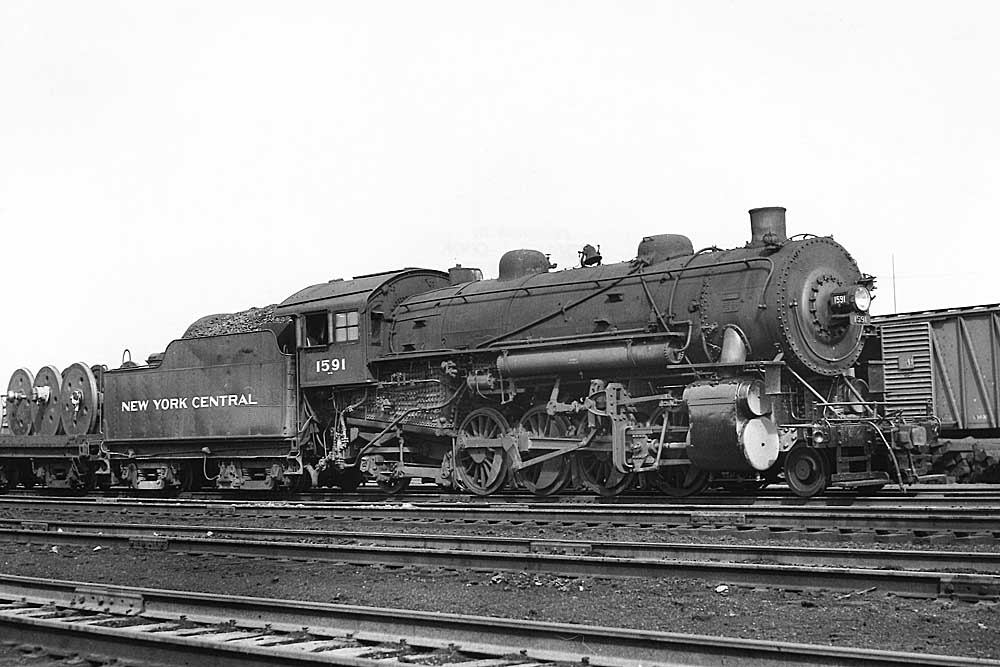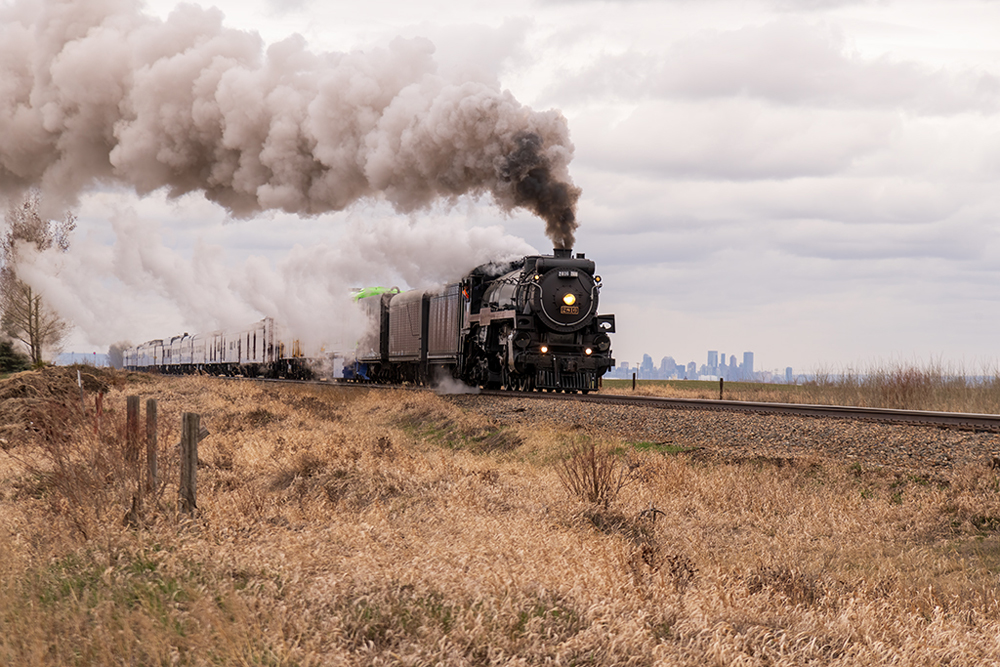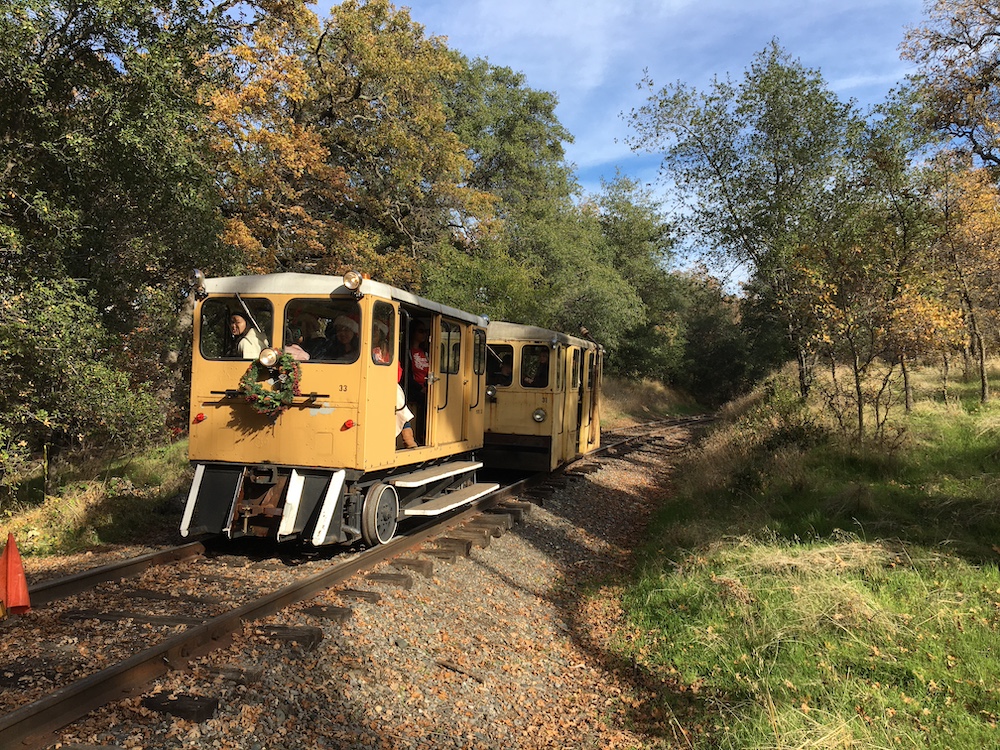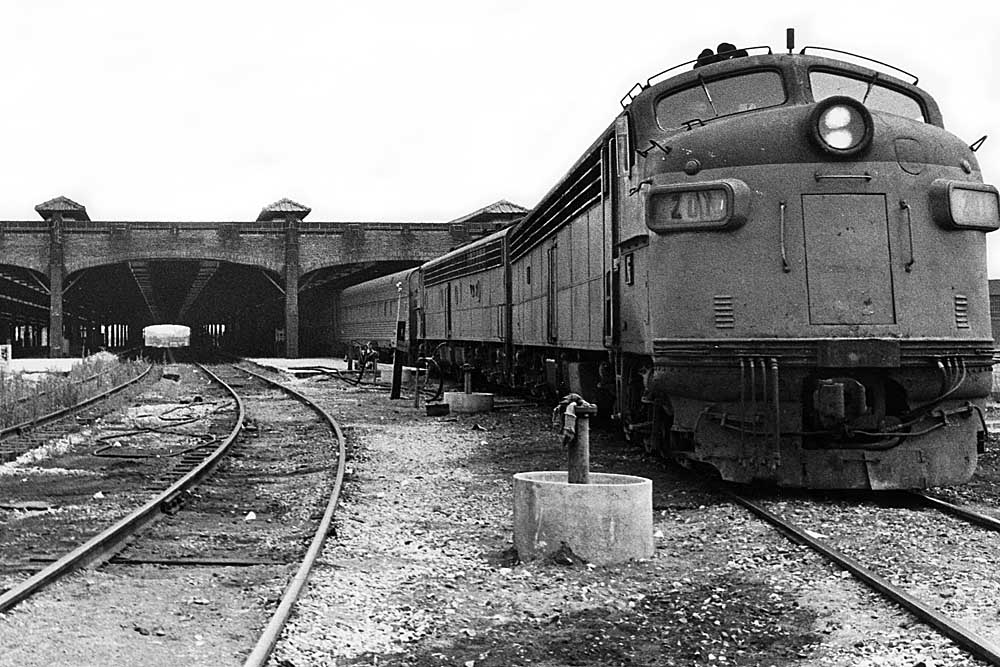Competition brought the need to accelerate fright trains, but with the locomotives available, speed required sacrificing train length. In 1922 Lima built an experimental 2-8-2 for New York Central, H-10 No. 8000. Lima’s William E. Woodard based the design on NYC’s H-7 Mikado but added a substantially larger firebox grate, a feedwater heater, larger cylinders, lightweight rods, and a booster-what we would now call “state of the art.” The H-10 could both out-pull and out-run the H-7, confirming Woodard’s views on the importance of increased steaming ability.
Woodard then designed a locomotive to answer the hypothetical question, “what if we make the grate even larger?” One answer was, “You’ll need a four-wheel trailing truck to support the firebox,” and another was the resulting locomotive would be able to generate enough steam for sustained speed. The tangible result was Lima demonstrator No. 1, class A-1, the first 2-8-4. Its 100-square-foot grate was half again as large as the grate of the NYC H-10. It had 28×30-inch cylinders and 63-inch drivers and carried a boiler pressure of 240 pounds. The frame of the A-1 ended behind the rear drivers, and the trailing truck transmitted the pulling forces and supported the rear of the firebox directly. It also had a booster on the rear axle and carried the ashpan.
In early 1925 the A-1 demonstrated on New York Central’s subsidiary Boston & Albany across the Berkshire Hills of western Massachusetts. The B&A quickly signed up for 45 copies and the wheel arrangement had a name. Both the wheel arrangement and Lima’s Super-Power concept (in simplest terms, a much greater capacity for making steam) were an immediate success. Railroads bought Berkshires by tens and dozens at a minimum (Toronto, Hamilton & Buffalo’s two are a special case-a 50-mile run, a fourth of which was on New York Central System tracks).
The 2-8-4’s built over the ensuing 24 years fall into four groups: copies of the A-1, with 28×30-inch cylinders and 63-inch drivers; the Erie’s enlarged version of the A-1, with 28.5×32-inch cylinders and 70-inch drivers; the Nickel Plate Berkshires (25×34-inch cylinders and 69-inch drivers) and the others of that design; and the rest, which don’t fit into the first three groups.
The copies of the A-1 were built between 1926 and 1929 for Boston & Albany, Illinois Central, Chicago & North Western, Boston & Maine, Missouri Pacific, and Toronto, Hamilton & Buffalo. B&A 1400-1444 and the IC and B&M engines, all built by Lima, had the short frame and articulated trailing truck of the original. The others had full-length frames and conventional trailing trucks.
Between 1927 and 1929 John J. Bernet brought Erie out of the drag freight era with the purchase of 105 Berkshires, and the 2-8-4 became a much faster freight engine. The two major differences between the Lima A-1 and the Erie Berkshires were a larger boiler and 70″ drivers; the cylinders were a half inch larger, and the locomotives had full-length frames.
In 1933 Bernet became president of the Nickel Plate to pull it out of the Depression the same way he had upgraded the Erie. The Nickel Plate was under the control of the Van Sweringen brothers, as were the Erie, Chesapeake & Ohio, Pere Marquette, and Wheeling & Lake Erie. The unified Advisory Mechanical Committee of the Van Sweringen railroads developed a 2-8-4 that combined design elements from the Erie’s Berkshires and C&O’s T-1 2-10-4. The Nickel Plate bought 80 2-8-4’s between 1934 and 1949, and the same design was used for the Berkshires of the Pere Marquette, Wheeling & Lake Erie, Chesapeake & Ohio, Virginian, and Richmond, Fredericksburg & Potomac. The PM engines had cylinders an inch larger in diameter, the W&LE engines were lighter, the C&O engines were heavier (C&O engines were often heavier than the same type on other roads), and RF&P’s had different domes and cabs. The Virginian copied the C&O design for its five Berkshires of 1946.















Personally I like P&LE RR A2a berkshires because , like the NYC niagaras, they represent 3rd generation steam locomotive development in America. Paul Keifer was a great engineer because he,at least, tried to build something to compete with the diesel. Coal miners in America should be thanking his efforts. Mark